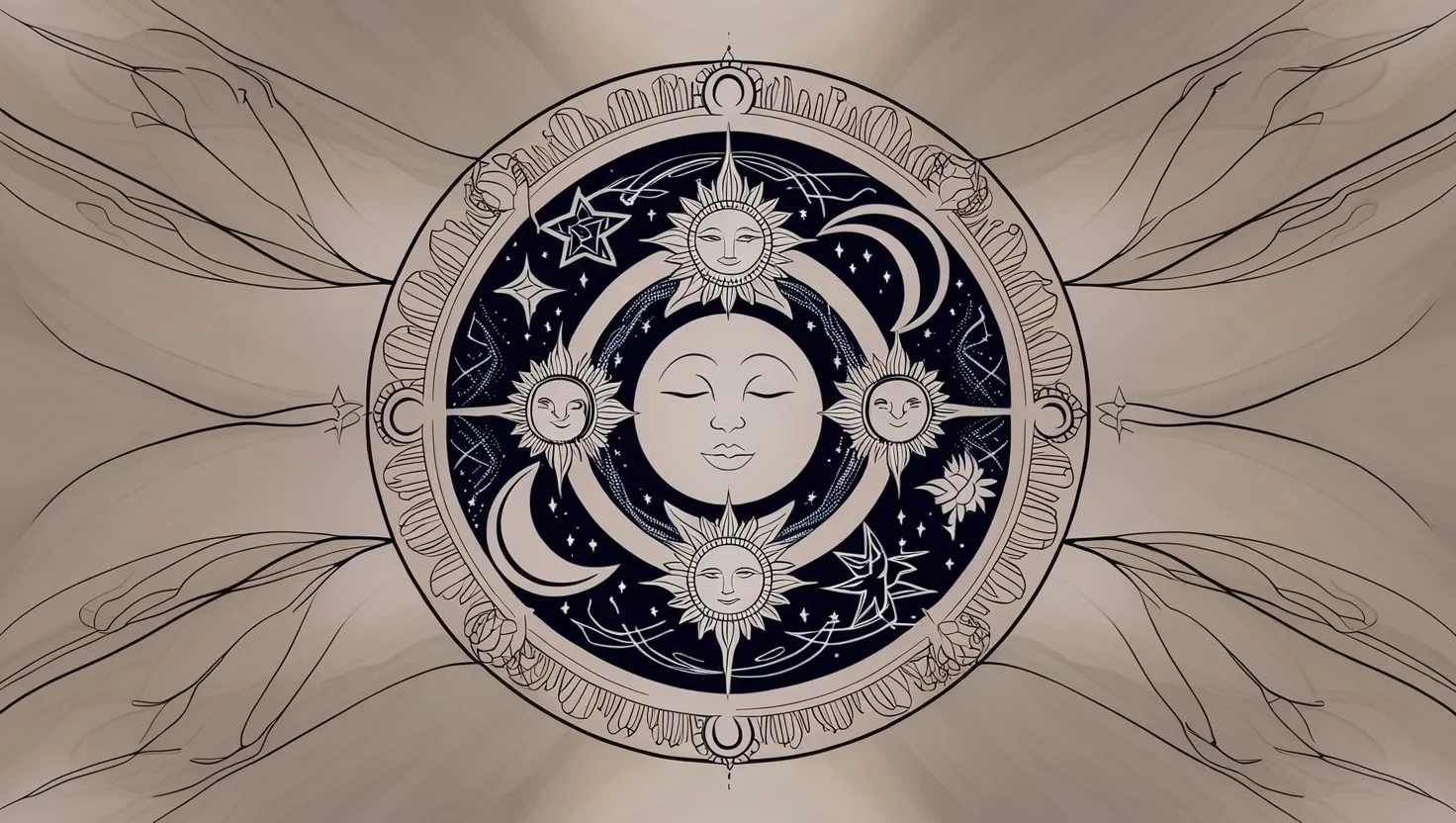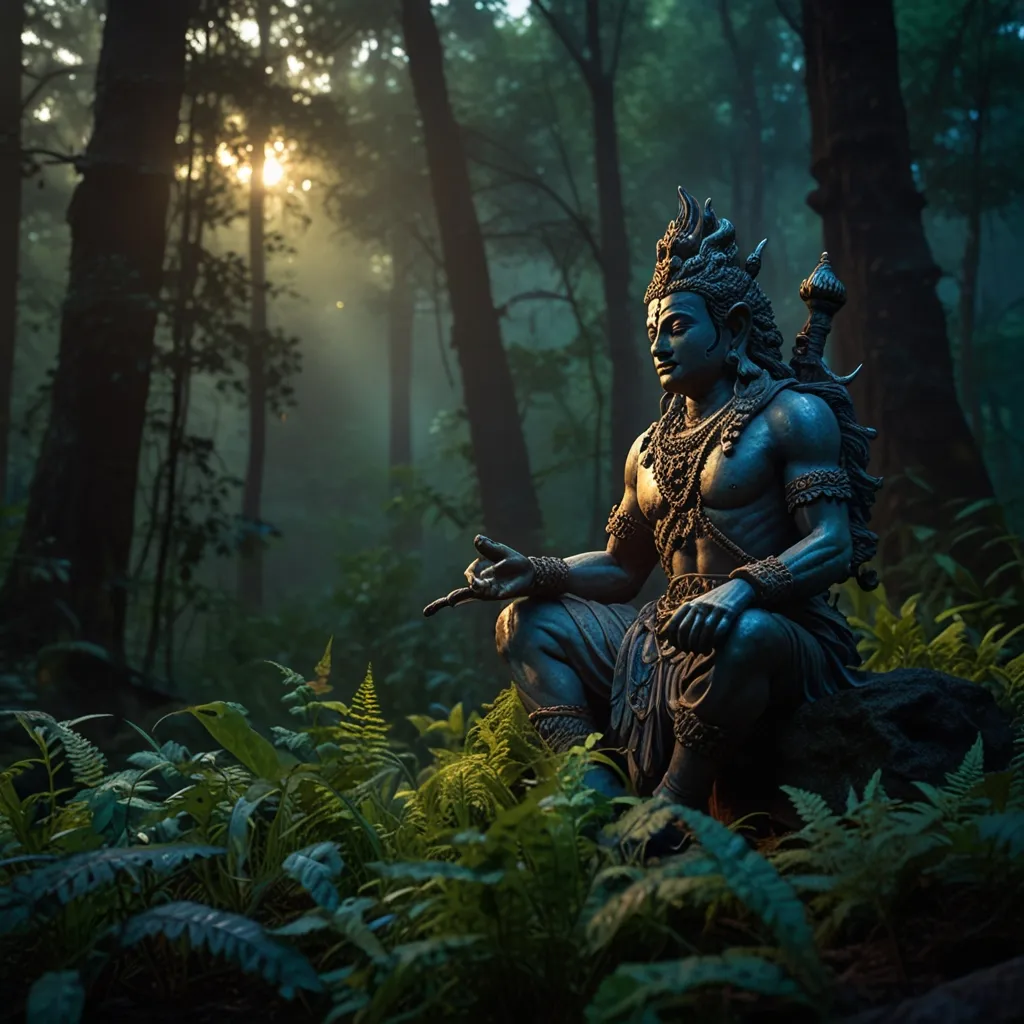In the vast and intricate landscape of Vedantic philosophy, there exists a concept that stands out for its simplicity and profundity: Sakshi Bhava, or the witness consciousness. This idea, rooted in ancient texts and refined by sages, invites us to explore the nature of pure consciousness that observes without judgment or attachment.
To understand Sakshi Bhava, we must first grasp the notion of the self as a witness. Imagine yourself standing by a river, watching the water flow. The river’s surface is constantly changing, with waves and ripples forming and dissolving. Yet, you, the observer, remain unchanged, unaffected by the river’s turbulence. This is akin to the role of Sakshi – the pure awareness that witnesses the world but does not get entangled in it.
In Vedanta, this concept is central to the understanding of self-realization. It teaches us that our essential nature is not the ever-changing flux of thoughts and emotions but the eternal, unchanging witness to these phenomena. By practicing Sakshi Bhava, we can distance ourselves from our mental tendencies, observing them rise, take form, and ultimately merge back into the witness. This practice is not about altering our thoughts or emotions but about recognizing them for what they are – transient and ephemeral.
The concept of Sakshi Bhava is intricately linked with the idea of Brahman, the ultimate reality. According to Advaita Vedanta, Brahman is the eternal, all-pervading consciousness that underlies all existence. It is the cosmic consciousness, Isvara Chaitanya, that manifests the world through Maya, or illusion. However, this manifestation does not change Brahman’s inherent nature; it remains the uninvolved witness to its own creation. This same principle applies to us: we are not the actors in the drama of life but the witnesses, observing our thoughts, emotions, and actions without being bound by them.
One of the most compelling aspects of Sakshi Bhava is its application in everyday life. It is not a practice confined to meditation or spiritual retreats but a way of living. When you are a Sakshi, you are constantly aware of your surroundings and your inner world. You observe your thoughts and emotions without getting entangled in them, much like a spectator watching a play. This awareness keeps you grounded in the present moment, free from the influences of likes and dislikes (Raga-Dvesha) and the ego’s constant need for validation.
In practical terms, practicing Sakshi Bhava involves a simple yet profound shift in perspective. Imagine your mind as a room filled with various components – sensations, thoughts, emotions, and memories. To practice Sakshi Bhava, you step out of this room and observe its contents without engaging with them. This detachment allows you to see your mental activities for what they are – mere phenomena that do not define your true nature.
This practice is particularly useful in meditation, where the goal is not to stop the mind but to observe it without judgment. When you meditate, you create a space where your mind can calm down, and you can witness its activities more clearly. Over time, this meditative state can spill over into your daily activities, helping you navigate life’s challenges with greater equanimity and clarity.
The journey of Sakshi Bhava is also deeply intertwined with the concept of karma and the cycle of birth and death (Samsara). According to Vedanta, our actions are driven by ignorance (Avidya) and the subsequent chain of egoism, likes and dislikes, and the desire for action. However, when we practice Sakshi Bhava, we break free from this cycle. By performing actions without the expectation of fruits (Nishkamya Bhava), we do not accumulate new karma and are thus freed from the bonds of Samsara.
This freedom is not just theoretical but practical. When you are a Sakshi, you are no longer bound by the outcomes of your actions. You act without attachment, knowing that the results are not in your control. This detachment brings a sense of peace and liberation, as you are no longer tied to the whims of fate.
The path to achieving this state is through self-inquiry and the cultivation of sublime virtues. You purify your heart through selfless service, charity, and virtuous actions. You practice self-restraint, control the senses and the mind, and cultivate qualities like discrimination (Viveka), detachment (Vairagya), and a strong desire for liberation (Mumukshutva). These practices help you realize the ultimate truth – that you are not the body or the mind but the eternal witness, the Sakshi.
In this realization lies true freedom. It is not a freedom from action but a freedom from the illusion of doership. When you understand that you are the witness, you transcend the limitations of ego-bound existence. You see the world as a dream or thought-wave in Brahman, and you recognize your role as the observer, not the participant.
This understanding is not just philosophical but deeply personal. It changes how you interact with the world and how you perceive yourself. You are no longer a slave to your thoughts and emotions but a master who observes them with detachment. This detachment is not indifference but a profound awareness that allows you to act with clarity and purpose.
In the end, Sakshi Bhava is not just a concept but a way of life. It is a journey into the heart of consciousness, where you discover that true freedom lies not in doing but in being – the eternal witness to the play of consciousness. This journey, though challenging, is rewarding, offering insights into the nature of awareness and the path to liberation.
As you embark on this journey, remember that it is a path of awareness, not of achievement. It is about being present in every moment, observing life as it unfolds, and recognizing your true nature as the witness. In this recognition lies the key to inner peace, liberation, and a profound understanding of the cosmic reality that underlies all existence.






